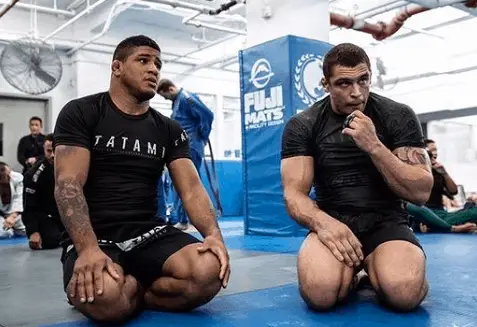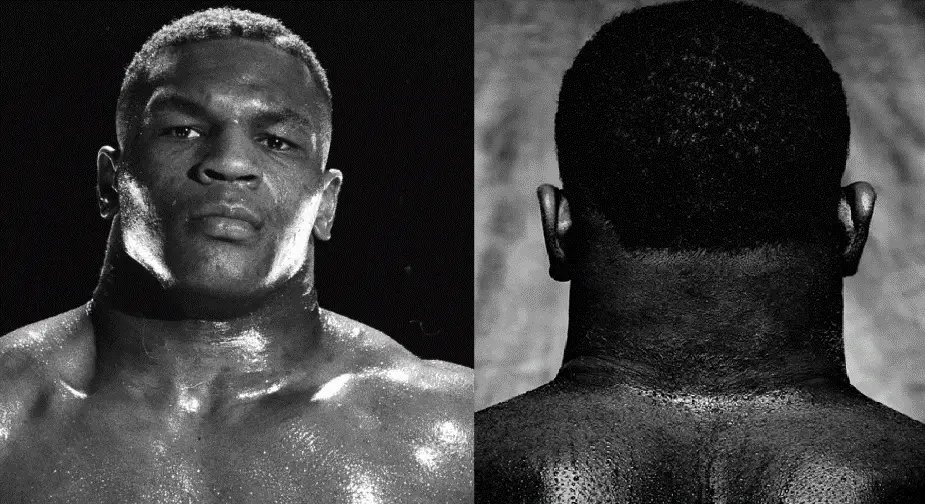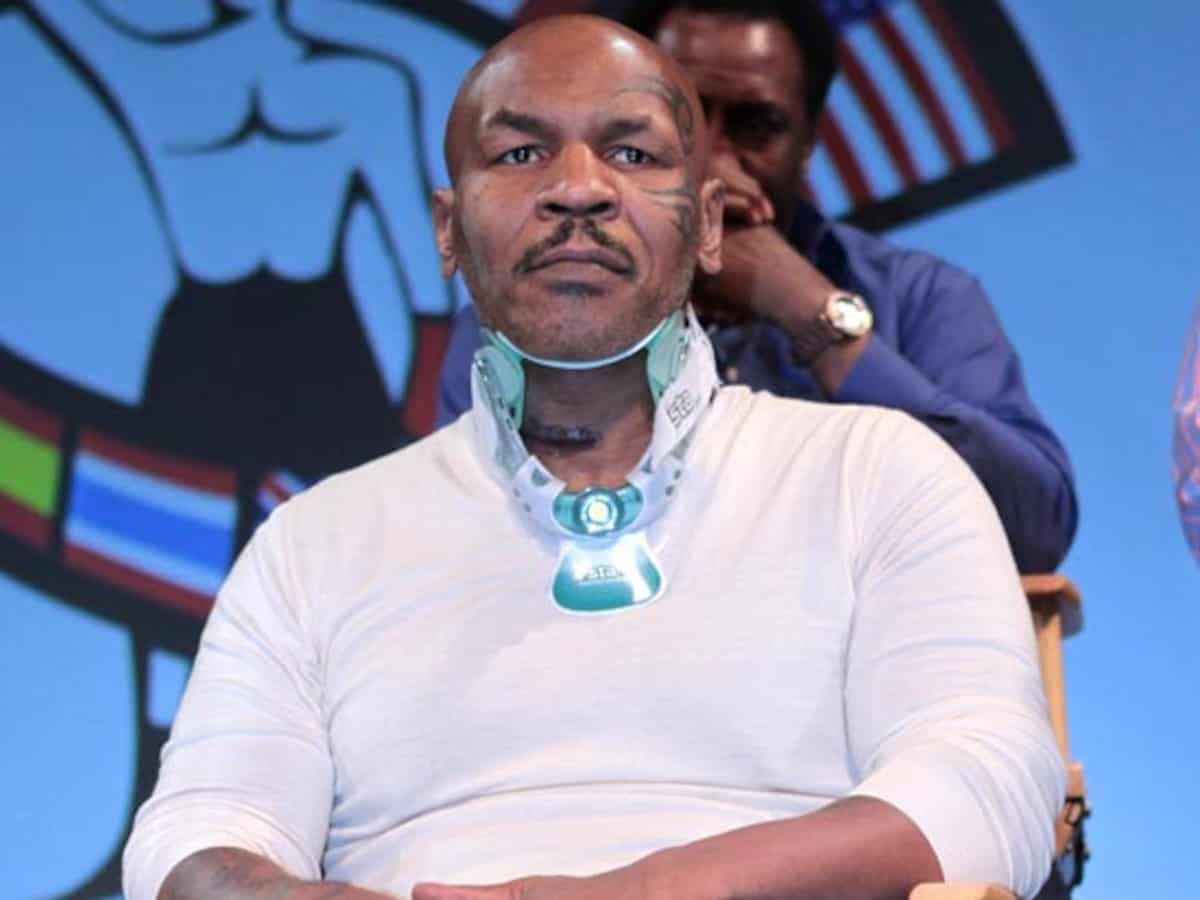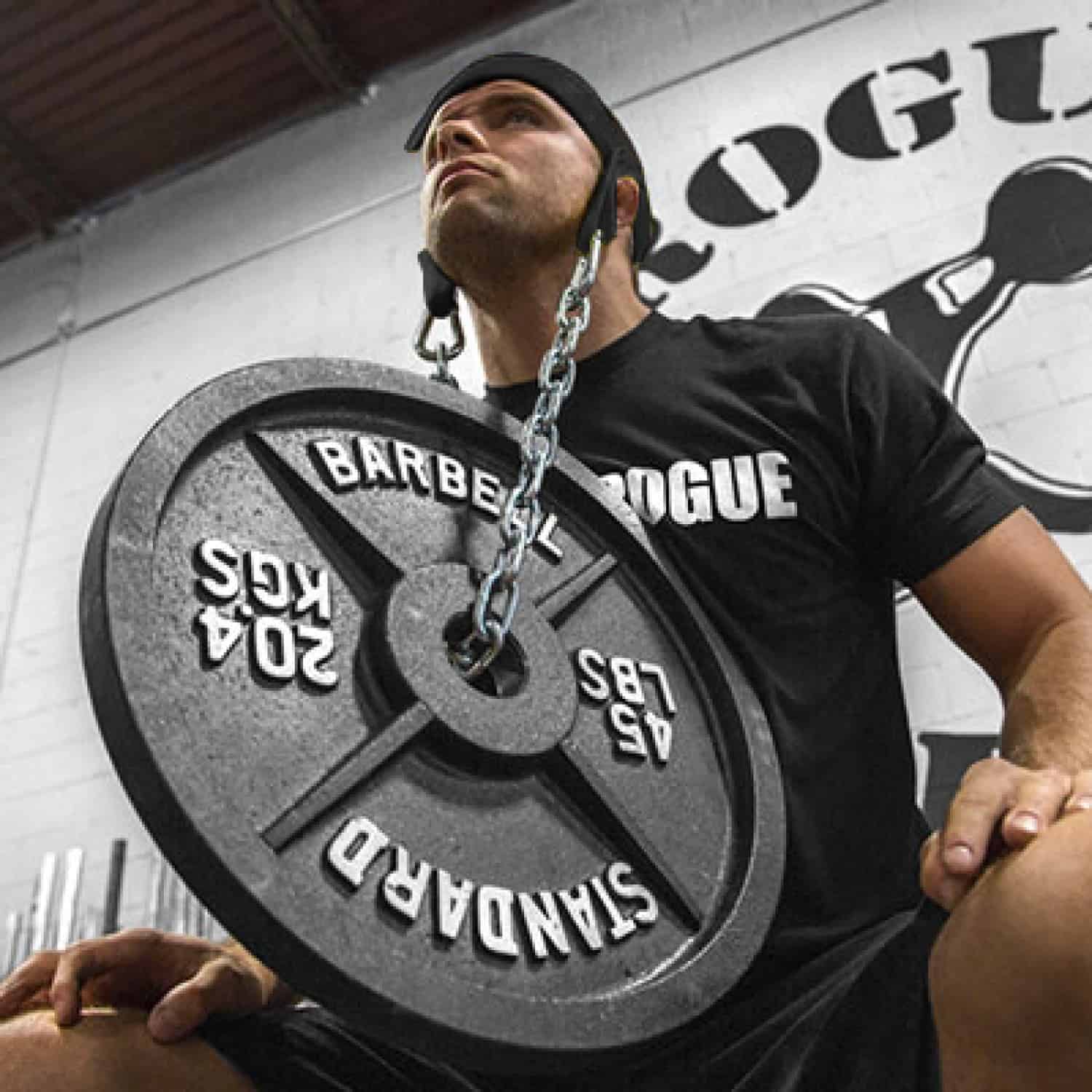You want to develop a bull like neck. However, you unsure how to do it safely. You have heard of bridging, maybe you have seen wrestlers or your BJJ training partners do it. It doesn’t look for very safe does it? Now you want to know if it is an effective way to train your neck or if it is dangerous?

Is bridging bad for your neck? Yes, bridging is bad for your neck. Bridging compresses the cervical spine which causes the discs in your neck to wear out. Many retired wrestlers have suffered herniated discs from years of bridging. You should avoid bridging and use other exercises such as rolling neck bridge, 4 way neck exercise and a neck harness if you want to safely train your neck.
What Is A Neck Bridge?
A neck bridge is where you lie on your back. You then lift your back off the ground and balance your weight on your feet and on your neck. Your shoulders and back will be completely off the ground and a large portion of your weight will be resting on your head. You roll backwards and forwards with the goal of trying to kiss the ground or touch your nose to the mat.
Here Is Mike Tyson Who Was Known For His Ridiculous Neck Performing Bridges
Why Do Wrestlers Bridge?
Wrestlers bridge because if their shoulders touch the mat they give up points and if their shoulders touch the mat for a few seconds they instantly lose the match. To avoid losing the match and giving up points a wrestler will bridge onto his head to prevent his shoulders touching the mat and to give him an opportunity to escape to his back.
In BJJ athletes do not need to worry about being pinned or giving up back exposure points. So there really is little point in BJJ athletes practicing the bridge as there are safe and more effective ways to develop your neck.
What Injuries Can Bridging Cause?
As the neck becomes hyper extended during the bridging movement, this can cause nerve impingement and damage the discs in the neck. This can lead to chronic pain, reduce mobility and herniated discs. Many formal wrestlers who have spent years doing bridges have suffered from severe herniated discs requiring spinal fusions.
You only get one neck as my wrestling coach use to say so you better look after it. Neck injuries are serious and can have long lasting and permanent effects. It is best to ere on the side of caution when engaging in neck training. You should avoid all neck exercises which have a risk of injury.
What Are The Benefits Of Bridging?

Even though bridging is dangerous and not good for you neck the exercise still does have some benefits.
- Avoid Being Pinned – If you are a wrestler you need to do everything to avoid being pinned, being pinned will instantly lose you the match, bridging is an effective last ditch effort to avoid being pinned, a wrestler with a strong bridge is incredibly difficult to pin
- Avoid Back Exposure – Like being pinned a wrestler can not expose his back to the mat as he will give up lots of points and risk losing the match, bridging can help a wrestler win a match by avoiding back exposure if they end being taken down
- Strengthen Neck – Bridging will strengthen your neck, by spending hours and hours putting large amounts of weight on your neck it will get very strong, the only problem is your neck may breakdown over the years
- Build Neck Muscles – Have you seen a prime Mike Tyson’s neck, the man looked like a bull, he was a huge proponent of bridging and it’s hard to argue with him with a neck like that, it could be tempting to follow his training protocol in hopes of developing a thickly muscled neck
- Reduce Neck Injuries – This may seem like a contradiction as bridging can cause injury, however during wrestling your can neck can be slammed into the mat, if your neck is use to bearing lots of weight your chance of suffering a neck injury is reduced, an athlete with an untrained neck is more likely to hurt themselves
What Are The Negatives Of Bridging?

The negatives of bridging definitely outweigh the benefits particularly if you are a BJJ athlete.
- Nerve Impingement – This can cause weakness, pins and needles, burning sensation, poor range of motion, you do not want a nerve impingement in your neck it can cause a variety of debilitating symptoms
- Reduced Mobility – You may not be able to turn your neck properly, reducing your quality of life
- Neck Pain – Constant neck pain is a common symptom from too much neck bridging
- Herniated Discs – Serious pain in your shoulder which shoots down your arms, numbness, weakness in your neck and arms, herniated discs are a serious condition and can cause some very nasty side effects
- Need Surgery – Many former wrestlers require serious neck injury such as a spinal fusion, these surgeries are risky, expensive and may not work
What Exercises Can I Do To Strengthen My Neck For BJJ?

Fortunately there are many exercises other bridges that you can perform which will build and strengthen your neck for BJJ.
Here Are Some Great Exercises To Strengthen Your Neck
- 4 way neck exercise – all you need is a bench and a weight plate, lie on your stomach on the bench with your head off the bench, place weight plate on the back of your head, bring your chin to your chest and extend until your neck is straight, lie on your back and both sides and repeat the process until you have done all 4 ways, start off light and perform 20-30 reps each side, add weight once you can perform 30 reps with ease
- Weighted neck harness – you can buy a harness which you place on your head and can attach weights to, to strengthen your neck move your neck up and down and back and forth, start off light, the neck is a sensitive area, so it is best to perform high repetitions with low weight vs low reps with high weight

- Rolling bridge – this is an adaption of the wrestler’s bridge, the wrestler’s bridge is a famous neck exercise however it can wear out your discs, this is a safer version, get in the plank position, put weight on your forehead and roll without letting your shoulders touch the ground until you are back in the starting position, perform 20-30 reps
- Deadlift – deadlifts don’t only develop your back and legs, they also will help your neck grow, start off performing 3 sets of 8 reps and try to add weight every workout, start off light and add 5 pounds per workout
Conclusion
Bridging is bad for your neck. Bridging can cause nerve impingement and compress your spine leading to you developing herniated discs. If you are a BJJ athlete there is no reason for you to be bridging as you do not need to worry about back exposure or being pinned. If you want to develop a strong neck forget about bridging and instead use a weighted neck harness, deadlift, perform rolling bridge and 4 way neck exercise. These exercises will strengthen your neck in a safe way.
